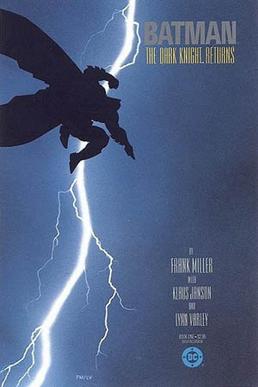
The Dark Knight Returns is a 1986 four-issue comic book miniseries starring Batman, written by Frank Miller, illustrated by Miller and Klaus Janson, with color by Lynn Varley, and published by DC Comics. It tells an alternative story of Bruce Wayne, who at 55 years old returns from a decade of retirement to fight crime while facing opposition from the Gotham City police force and the United States government. The story also features the return of classic foes Two-Face and the Joker, and culminates in a confrontation with Superman, who is now a pawn of the government.

The Sandman is a comic book written by Neil Gaiman and published by DC Comics. Its artists include Sam Kieth, Mike Dringenberg, Jill Thompson, Shawn McManus, Marc Hempel, Bryan Talbot, and Michael Zulli, with lettering by Todd Klein and covers by Dave McKean. The original series ran for 75 issues from January 1989 to March 1996. Beginning with issue No. 47, it was placed under DC's Vertigo imprint, and following Vertigo's retirement in 2020, reprints have been published under DC's Black Label imprint.

The Joker is a supervillain appearing in American comic books published by DC Comics. Created by Bill Finger, Bob Kane, and Jerry Robinson, the character first appeared in the debut issue of the comic book Batman on April 25, 1940. Credit for the Joker's creation is disputed; Kane and Robinson claimed responsibility for his design while acknowledging Finger's writing contribution. Although the Joker was planned to be killed off during his initial appearance, he was spared by editorial intervention, allowing the character to endure as the archenemy of the superhero Batman.
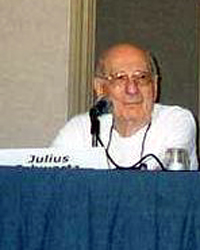
Julius "Julie" Schwartz was an American comic book editor, and a science fiction agent. He was born in The Bronx, New York. He is best known as a longtime editor at DC Comics, where at various times he was primary editor over the company's flagship superheroes, Superman and Batman.
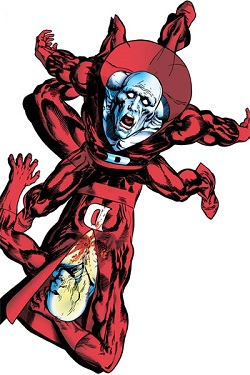
Deadman is a superhero appearing in American comic books published by DC Comics. He first appeared in Strange Adventures #205, and was created by Arnold Drake and Carmine Infantino.
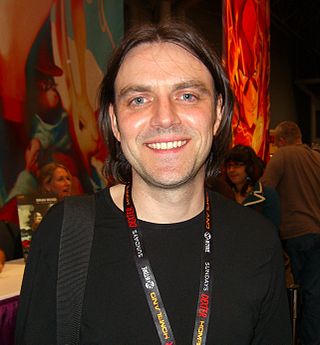
Vincent Patrick Deighan, better known by the pen name Frank Quitely, is a Scottish comic book artist. He is best known for his frequent collaborations with Grant Morrison on titles such as New X-Men, We3, All-Star Superman, and Batman and Robin, as well as his work with Mark Millar on The Authority and Jupiter's Legacy.

Metamorpho is a superhero appearing in American comic books published by DC Comics. He was created in 1965 by writer Bob Haney and artist Ramona Fradon.

Doctor Occult is a fictional superhero appearing in American comic books published by DC Comics. Created by Jerry Siegel and Joe Shuster, Doctor Occult is an occult detective and private investigator and user of magic who specializes in cases involving the supernatural. Doctor Occult first appeared in 1935 around the Golden Age of Comic Books. He was published by National Comics Publications and Centaur Publications within anthology titles. He is the earliest recurring, originally featured fictional character created by DC Comics that is still currently used in the DC Universe. He is commonly affiliated with the All-Star Squadron and has appeared occasionally in paranormal-related stories by DC and Vertigo Comics titles. Doctor Occult has appeared in a few official tie-in comic books and has appeared in one DC based video game which is established as within DC's multiverse canon.

Bat-Mite is a fictional character appearing in American comic books published by DC Comics. Bat-Mite is an imp similar to the Superman villain Mister Mxyzptlk. Depicted as a small, childlike man in an ill-fitting copy of Batman's costume, Bat-Mite possesses what appear to be near-infinite magical powers, but he actually uses highly advanced technology from the fifth dimension that cannot be understood by humans' limited three-dimensional views. Unlike Mxyzptlk, Bat-Mite idolizes his superhero target and thus he has visited Batman on various occasions, often setting up strange and ridiculous events so that he could see his hero in action. Bat-Mite is more of a nuisance than a supervillain, and often departs of his own accord upon realizing that he has angered his idol.

Egghead is a fictional character created for the 1960s Batman television series. Played by Vincent Price, the character was identifiable by his pale bald head and white and yellow suit. He believes himself to be "the world's smartest criminal", and his crimes usually have an egg motif to them; he also includes egg-related puns in his speech and uses various egg-themed weapons. Additionally, Egghead used deductive reasoning to deduce Batman's secret identity.

"Prez" is the name of several characters appearing in comics published by DC Comics. The original was Prez Rickard, the first teenage President of the United States, who appeared in a short-lived comic series by writer Joe Simon and artist Jerry Grandenetti in 1973 and 1974. Similar characters have appeared since then, revisiting the concept or paying homage to the original character. In 2015, DC published a miniseries about a teenage girl named Beth Ross who is elected President via Twitter in the year 2036.

Klarion the Witch Boy is a supervillain appearing in American comic books published by DC Comics, having first appeared in The Demon #7 and was created by Jack Kirby. The character is typically portrayed as a powerful but mischievous, immature extradimensional warlock who serves as both the archenemy of Etrigan the Demon and is a reoccurring adversary for various mystic characters and teams in the DC Universe.
Mad Mod is a fictional character appearing in American comic books published by DC Comics. The character is known as one of the first recurring villains of the Teen Titans.
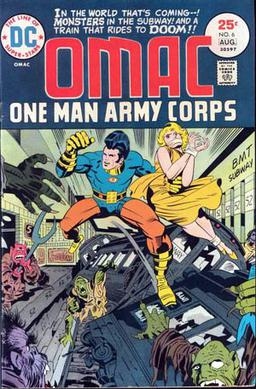
OMAC is a superhero appearing in American comic books published by DC Comics.
John Bolton is a British comic book artist and illustrator most known for his dense, painted style, which often verges on photorealism. He was one of the first British artists to come to work in the American comics industry, a phenomenon which took root in the late 1980s and has since become standard practice.

Batman: The Brave and the Bold is an American animated television series based in part on the DC Comics series The Brave and the Bold which features two or more superheroes coming together to solve a crime or foil a super villain. As the title suggests, the series focuses on Batman's regular "team-ups" with various heroes similar to the most well-known version of the original comic book series. This version has a much lighter and simpler, often comic feel, targeting younger viewers more than the character's other series. The series premiered on November 14, 2008, on Cartoon Network in the United States, and ended on November 18, 2011. It also aired in Canada on Teletoon.
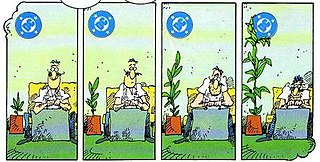
Sergio Aragonés Destroys DC is a comic book written by Sergio Aragonés and Mark Evanier and published in 1996. The book is a satire of DC Comics characters. They also produced an equivalent at Marvel Comics, called Sergio Aragonés Massacres Marvel, and another at Dark Horse Comics called Sergio Aragonés Stomps Star Wars.

DC Black Label is an imprint of American comic book publisher DC Comics consisting of original miniseries and reprints of books previously published under other imprints. The imprint intends to present traditional DC Universe characters for a mature audience with stand-alone Prestige Format series. The first title of the imprint, Batman: Damned, was shipped on September 19, 2018.
















